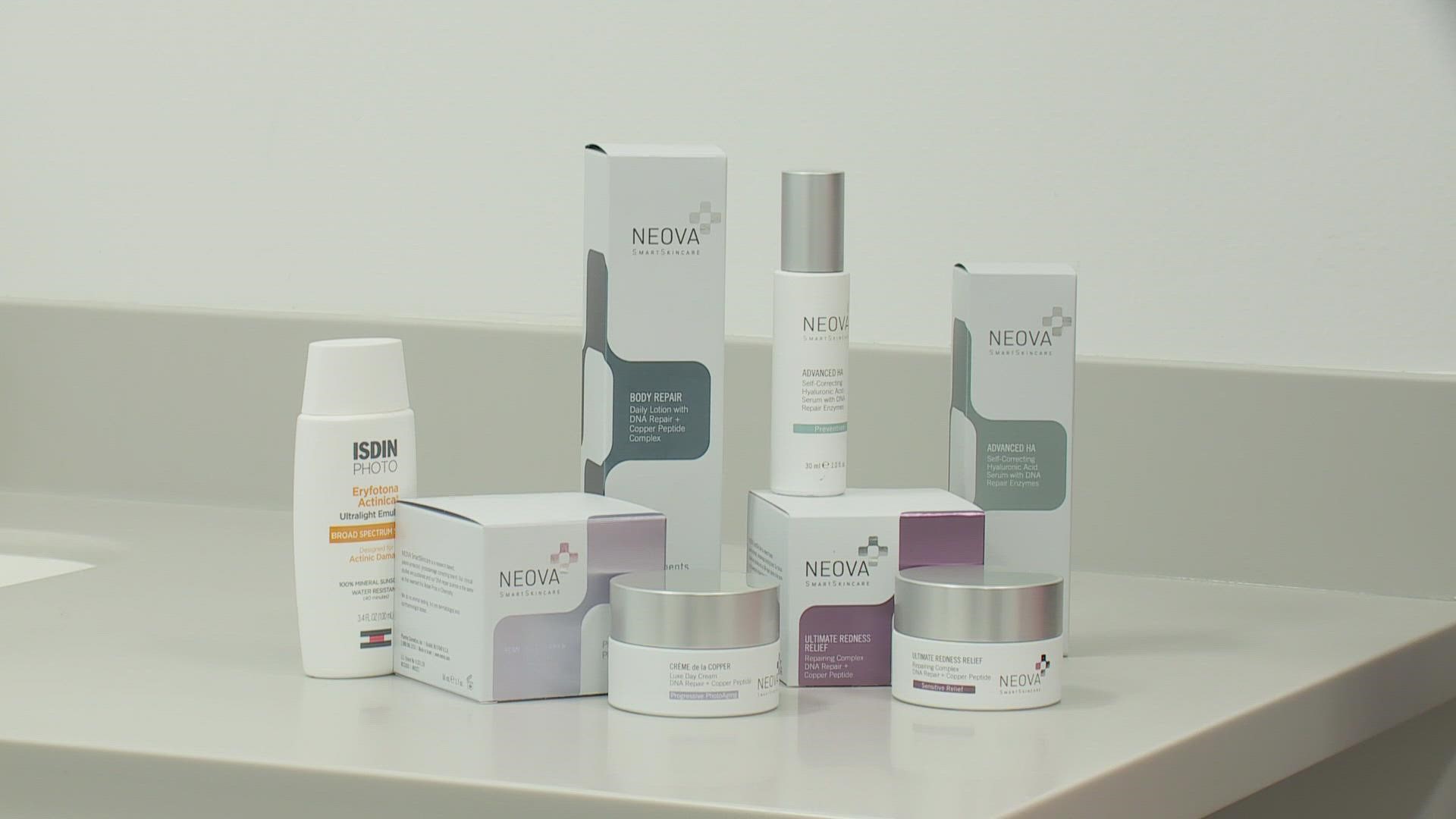NEW ORLEANS — Many skin creams just temporarily add moisture to dry skin, but now technology that repairs genetic damage of skin cells, is being added to face and body creams.
And it's not only for anti-aging, but may prevent skin cancer as well.
Ashley Perkins Hecker did what a lot of us do in our youth. There were outdoor festivals with no sunscreen and hats, and worse.
“I didn't take great care of my skin as a teenager and a 20-year-old. I was in the tanning beds. I was in the sun. I actually do tan pretty well. so I never thought it was an issue for me, but as I got into my 20s, it became an issue,” said Hecker, 43 of New Orleans.
Add to that, the outdoor trips she guides as an educational travel agent, factor in her fair skin, and green eyes, making her more vulnerable to skin damage, and if that's not enough, she has rosacea.
“Everything makes me red, red wine, the sun, airplanes, everything fun makes me red,” laughed Hecker.
She tried everything peels, medications, but now at 43, she's trying something she says is working.
“I've only been using it for three weeks and the difference is night and day,” noticed Hecker.
Ashley is using one of the DNA repair creams on the market. The technology of using plant enzymes to repair damaged skin cells has been studied for decades. Several years ago, three researchers were awarded the Nobel Prize in Chemistry, for mapping how cells repair damaged DNA and safeguard genetic information.
And now, newer technology has figured out how to get it into the skin cells. It's a technology that doctors say it can decrease pigment, redness, decrease lines, freckling, brown sun spots, scaly spots, and improve the overall health of the skin.
When asked if the creams can prevent damage or if they can also reverse the damage, Board-Certified Dermatologist, Dr. Mara Haseltine, of Pure Dermatology in Metairie replied, “Both. So using a sunscreen in conjunction with a DNA repair enzyme can clearly protect and double reverse sun damage.”
It started out helping prevent precancers of the skin.
“And what they found over a year’s time, that the group in the photolyase group, did not develop any new precancers, whereas 10 out of 15 in the other group did develop precancers. The same thing that's causing DNA damage and precancer is also causing wrinkles and brown spots,” explained Dr. Kate Zibilich Holcomb, a Board-Certified Dermatologist and owner of Pure Dermatology in Metairie.
The original technology with one enzyme to repair DNA has been out in Europe may be more than a decade. Then in 2019, new technology with three enzymes to repair DNA came out. About a year ago, people in the Northeast started using it and it's just now catching on in the South.
Isdin, with a built-in sunscreen, has been in Europe for 20 years. It's the one with one repair enzyme. The newer Neova has three repair enzymes. You can layer your own sunscreen on top. There's also Cellular MD. You can find them on the internet and in doctor's offices. Some are even in Walmart.
“I do think we'll see these be really corner the market. I think we'll see these on the new horizon like really basically recommended for everybody,” said Dr. Haseltine.
Along with sunscreen, doctors say they are best used with the holy grail of skin repair, prescription tretinoin, like Retin-A and other brands, or the over-the-counter weaker version, retinol.
“I'm able to now use my retinol and I'm not irritated anymore. I'm on zoom calls every day, most of the day, and I’ve gotten a couple of, ‘Oh, what have you done? Did you get any sun? I mean your skin looks nicer. You're glowing a little bit,’” Hecker said of people noticing her skin looks better.
Each of the three DNA repair product lines offer several different types of creams for different uses. Prices can range from $50 to $120 dollars depending on which one you need.

